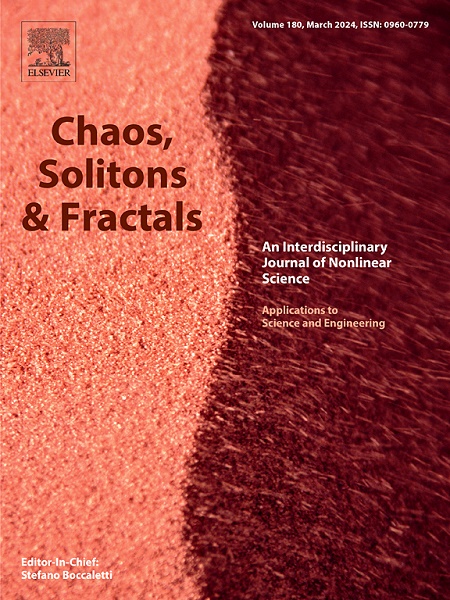评估经验基础设施网络对自然灾害的脆弱性
IF 5.3
1区 数学
Q1 MATHEMATICS, INTERDISCIPLINARY APPLICATIONS
引用次数: 0
摘要
人造基础设施是复杂的系统,不断暴露于威胁其功能的事件中,例如级联故障,当物理量的流在网络内重新分配时,由于局部中断而发生。然而,外生灾难性事件和内部故障对关键基础设施稳健性所起的作用通常是在简化的假设下独立处理的,并且缺乏现实风险评估的统一图景。在这里,我们通过引入操作影响-拆除(OAD)模型来填补这一空白,该模型捕获了本地和非本地故障传播机制。该模型结合了局部扩散的反应扩散过程和远程相互作用的全局场效应,使我们能够定量表征基础设施网络中的级联动力学。此外,我们还纳入了外部压力源信息,以评估经验网络基础设施的稳健性并构建空间风险图。通过使用来自强风暴(2009-2016年)和地震(2000-2023年)的数据作为北美电网和全球航空运输系统的压力源,我们提供了一种定量的方法,根据它们引发系统性影响的潜力对事件进行排名。通过分析欧洲电网对模拟强风暴的响应,我们发现它可以显示出高水平的系统性风险。全球气候的不确定性和全球范围内极端事件的频率不断加快,需要新的战略来量化、适应和减轻系统性风险。我们的框架提供了一个合适的起点来评估经验系统在现实和假设情景中的稳健性。本文章由计算机程序翻译,如有差异,请以英文原文为准。
Assessing the vulnerability of empirical infrastructure networks to natural catastrophes
Human-made infrastructures are complex systems continually exposed to events that threat their function, such as cascading failures, occurring when the flow of physical quantities is redistributed within the network as a consequence of localized disruptions. Nevertheless, the role played by exogenous catastrophic events and internal failures on the robustness of critical infrastructures is usually addressed independently, under simplifying assumptions and lacking a unified picture for realistic risk assessments. Here, we fill this gap by introducing the Operational-Affected-Dismantled (OAD) model that captures both local and nonlocal failure propagation mechanisms. The model combines reaction–diffusion processes for local spreading with a global field effect for long-range interactions, allowing us to quantitatively characterize the cascade dynamics in infrastructure networks. Moreover, we include information on external stressors to assess the robustness of empirical network infrastructures and build spatial risk maps. By using data from severe storms (2009–2016) and from earthquakes (2000–2023) as stressors of the North American power grid and the worldwide airline transportation system, respectively, we offer a quantitative way to rank events by their potential to trigger systemic effects. By analyzing the response of the European power grid to simulated severe storms, we find that it can show high levels of systemic risk. Uncertainty in global climate and the accelerating frequency of extreme events all over the globe call for novel strategies to quantify, adapt to and mitigate systemic risk. Our framework provides a suitable starting point to assess the robustness of empirical systems in realistic and what-if scenarios.
求助全文
通过发布文献求助,成功后即可免费获取论文全文。
去求助
来源期刊

Chaos Solitons & Fractals
物理-数学跨学科应用
CiteScore
13.20
自引率
10.30%
发文量
1087
审稿时长
9 months
期刊介绍:
Chaos, Solitons & Fractals strives to establish itself as a premier journal in the interdisciplinary realm of Nonlinear Science, Non-equilibrium, and Complex Phenomena. It welcomes submissions covering a broad spectrum of topics within this field, including dynamics, non-equilibrium processes in physics, chemistry, and geophysics, complex matter and networks, mathematical models, computational biology, applications to quantum and mesoscopic phenomena, fluctuations and random processes, self-organization, and social phenomena.
 求助内容:
求助内容: 应助结果提醒方式:
应助结果提醒方式:


